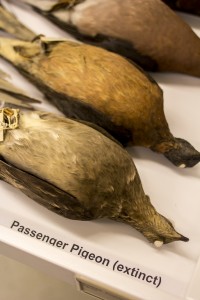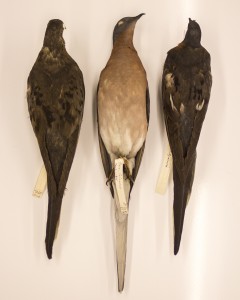You may have heard that researchers discovered a new species of flying squirrel. These squirrels had lived in plain sight for decades but only recently did Brian Arbogast and colleagues investigate the DNA of some of these animals. Their findings were revealing: The Pacific squirrels cluster separately from the northern and southern flying squirrel. The researchers analyzed mitochondrial DNA as well as microsatellite data to reveal this new evolutionary relationship.
Note: Mitochondrial DNA and microsatellites are parts of a species’ genome that are regularly used to construct evolutionary trees. In addition to the DNA in every cell’s nucleus in our body, mitochondria, the energy powerhouses in our cells, have their own genome. This mitochondrial genome is relatively small, is inherited from the mother only and has relatively high mutation rates. It is like a small clonal lineage within an organism which makes it ideal for evolutionary studies. Microsatellites are short sequence repeats in the nuclear genome that do not produce proteins. Thus they are free to mutate at a higher rate than coding sequences – mutations will not mess up protein production- and they frequently vary in length and thus reveal relationships among organisms.
A few weeks ago, before this study was published, 2 species of flying squirrels were considered to exist in North America, the northern and the southern flying squirrel. Here in Ohio the northern flying squirrels is resident – it is nocturnal though, that’s why you probably have not seen one yet.
DNA analysis showed that the coastal squirrels in Washington and Oregon are distinct from their northerly relatives and that they actually only co-occur with them at 3 sites in the Pacific Northwest. Northern and the newly described Humboldt’s flying squirrel do not interbreed at these sites. By the way, the researchers named the new species Glaucomys oregonensis because the specimen that was used to describe the species was collected in Oregon.
You may recall from a previous post, that Dr. Andreas Chavez in our department of EEOB studies relationships among squirrels in a different genus, Tamiasciurus, the red squirrel T. hudsonicus and the Douglas squirrel T. douglasii. These two species share habitat in the Pacific Northwest and they do hybridize.
Dr. Chavez was not available for an interview for his thoughts on the new species description of flying squirrels, because he is currently pursuing his own fieldwork in the Pacific Northwest. He and his field assistant Stephanie Malinich are collecting data to better understand the hybrid zone dynamics between the Douglas and red squirrel.
We will give you an update on Dr. Chavez’ research once he returns.
 About the Author: Angelika Nelson is the curator of the Borror Laboratory of Bioacoustics and writing this post for Stephanie Malinich, collection manager of the tetrapods collection. Stephanie is currently doing fieldwork on the red and the Douglas squirrel in the Pacific Northwest.
About the Author: Angelika Nelson is the curator of the Borror Laboratory of Bioacoustics and writing this post for Stephanie Malinich, collection manager of the tetrapods collection. Stephanie is currently doing fieldwork on the red and the Douglas squirrel in the Pacific Northwest.





